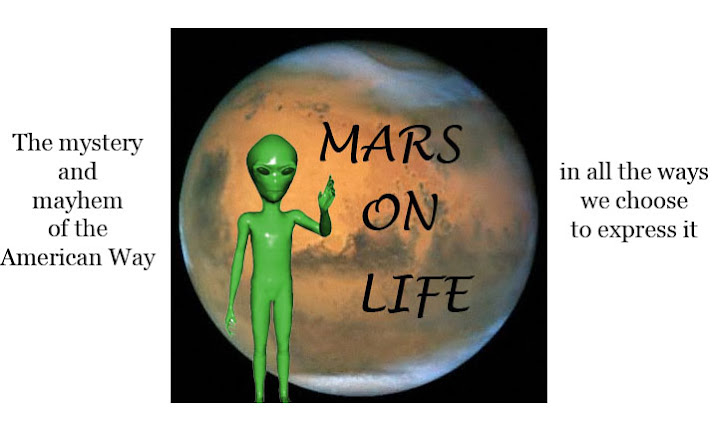
John Galliano sent an underwear-clad model down the runway with a bloody, scraped chest and the hood and noose of a hanged man. Miuccia Prada crowed that the theme of her collection was "...the things that men usually do to women--it's revenge!" The reception to these two Fall '08 men's shows was superficially mistaken by many. They said that Galliano had trumped his own flamboyant theatricality. A hangman's noose and men's briefs--Vive la différence! It began and ended on spectacle. As always, spectacle overshadowed implication. There was praise for wearability and translation to the street. At Prada, male flounces attached at the hip like Colorforms caused perplexed critical response. Beyond her own glib statement, nearly everyone intuited that the designer was making a statement about gender bifurcation and uniform and the need to move away from historical constraint into fresh contribution. Yet the female-inflected add-ons were not at all wearable or even adaptable to current modes of dress. As respects practicality, they ended up looking foolish and worse, gratuitous.
In the case of Galliano, the reaction was about content--what one saw on the runway-- and not about signification. The response to Prada touched upon communications theory.
Because these two collections had the most impactful content and were the most open to critical dialogue, they are the two that best exemplify the erroneous interpretation of the convoluted communications maxim "The medium is the message."
"The medium is the message" is Marshall McLuhan's famously contradictory statement. Superficially, we all believe we can define both "medium" and "message." We define medium as the means by which message is broadcast and message as the content. Without knowing what McLuhan meant, the statement is nonsensical. By our definition the apparel is the message and the medium the show itself. We inferred Prada's message that rigidity and social convention are no longer necessary--a powerful comment on the accepted status quo. Men wear slacks and women wear skirts. These are the current conventions in Western society and have been for hundreds of years. Yet, when we take McLuhan's quotation at face value and in error, the runway show itself was the message, exclusive of the garments themselves.
The real message, and the real meaning of the statement viz the collections, unfolds in the future.
McLuhan defined "medium" as an "extension of ourselves." Clothing is an extension; we select it for different and quite definable reasons. An extension enables us to perform something in addition to what we were able to perform independent of the extension: McLuhan gives the example of a hammer extending an arm. The arm on its own is not able to hammer a nail. By extending McLuhan's examples to fashion, we can see that a person might wear heels to be taller, in order to reach the top shelf in the grocery. If we take the equation into the realm of the mind, we see that a woman might wear stiletto Louboutins to convey sexuality and power. A man wears a Raf Simons jacket to show that he is not just au fait, he is also a stylistic leader and a visionary.
the realm of the mind, we see that a woman might wear stiletto Louboutins to convey sexuality and power. A man wears a Raf Simons jacket to show that he is not just au fait, he is also a stylistic leader and a visionary.
The key precept of media is that media effects ongoing change through growth.
"Message" is defined as "the change of scale or pace or pattern" elicited by the media. What "message" is not is the content--that is, the garments and the sets and the theme--but would instead be a change (for instance, an acceptance of men wearing flounce on their hips) brought about by the media. If a man were to don a ballerina's pink tutu for a board meeting, this would be the message in action. It's unclear whether Prada herself understood this theoretical interpretation; newspapers picked up the "revenge" comment and ran with it. "Revenge" is a powerful noun of heightened poetic and shock value.
McLuhan's theory holds that we tend to focus only on content. At a runway show, we focus on the riveting visual feast. This was especially true at Galliano, where a medieval panoply unfolded on a runway meant to mimic the frozen Thames. Our gaze is limited by the striking images and settings and also by the mood. If we focus only on content, McLuhan believes, we are not in a position to detect development. We only know under what circumstances we might wear the ga rment or adapt it to our wardrobe. For instance, we might adopt the uneven lengths on a pair of pants. Or we might not; doing so might cause one to be a figure of mockery among one's peers (although hardly as likely as being mocked for wearing a pink tutu to a board meeting). However, it may come about that this style is adopted gradually, over a period of many years, and that it resulted in some kind of attitudinal change that wasn't originally clear (again, more so with the tutu). In hindsight, the runway shows of Fall 2008 would be the reference, even as they are supplanted by newer fashion innovations and directions.
rment or adapt it to our wardrobe. For instance, we might adopt the uneven lengths on a pair of pants. Or we might not; doing so might cause one to be a figure of mockery among one's peers (although hardly as likely as being mocked for wearing a pink tutu to a board meeting). However, it may come about that this style is adopted gradually, over a period of many years, and that it resulted in some kind of attitudinal change that wasn't originally clear (again, more so with the tutu). In hindsight, the runway shows of Fall 2008 would be the reference, even as they are supplanted by newer fashion innovations and directions.
In another example, suppose that in 20 years women begin to wear bowler hats and also become enamored of aggressive contact sport. A scholar might find explanation in Prada's flounce. Or perhaps there is a great decline in the number of teen suicides in the year 2050, and this positive change is then traced to the crudely ironic Galliano posterboard shirt.
Over time, the changes may be slight and imperceptible and perhaps not obviously relatable to any given medium. It is possible that Galliano's frozen medieval bloodfeast anticipated today's polarizing debate on capital punishment or the necessity or superfluity of a titulary English monarchy. Although a remote possibility, there was cleverness in the face of spectacle that suggested some sort of flashback didacticism.
With change comes responsibility. Not all change is beneficial. If young, tutu-wearing men were attacked for their choice of clothing, it is probable that there was an antecedent behavioral signal (change) that was ignored. The ensuing harm would have been avoidable. "The medium is the message" holds that as a collective, we assume responsibility for identifying and stopping harmful development before it becomes destructive.
A fashion show may succeed as temporarily entertaining artistic/creative event, yet analyzed in light of McLuhan's theory it may also serve as a catalyst for change. Although it may contain a wealth of theatrical incident in the present, its message has potentiality far beyond today's runway.
(Riz of Mode et Utopie addressed positive message in a brilliant essay; my own essay expands upon that earlier work.)
Tuesday, January 22, 2008
Galliano and Prada: Revenge or Communications Theorists
Subscribe to:
Post Comments (Atom)









8 comments:
This is a great post, but because I'm shallow, all I want to do is that Woody Allen line: "Oh, that's funny, because I happen to have Mr. McLuhan right here."
WB, LOL!!
McLuhan was introduced on day one of journalism school. A survey course, 200 students, a bitterly cold day, and I was 17 years old and had no idea what it meant. They didn't explain it, either. I still have my old notebook where I scrawled "HUH?" across the first page. But this was only because they didn't have "WTF?" then.
As much as I enjoyed this, I think I can safely say that whatever happens in the future it will not be traced back to Prada 2008 as a cause - unless the event is the fall of Prada.
Thomas, LOL!!
I wrote this as response to Riz's essay (linked). That particular post brought the McLuhan phrase to mind.
Thanks for the mention...I have a longer post on Galliano Men's to come out soon. I am working on it. But I am digesting your thoughts here...I look forward to hearing your thoughts when I get around to reviewing the show...
Can't wait to read it, Riz!
This is a really interesting perspective on that odd collection. I've actually already seen a couple street style pictures of men wearing dress-length teeshirts and leggings, or even skirts, so maybe this show actually is signifying a shift in ideas about gender-specific clothes? Or not.
Stephanie, men have been wearing skirts for centuries, whether that be a cultural and historic reference (a kilt, for example) or an anti-fashion (in the hippie movement). It's arguable as to whether it would be adopted outside of these two arenas.
Post a Comment